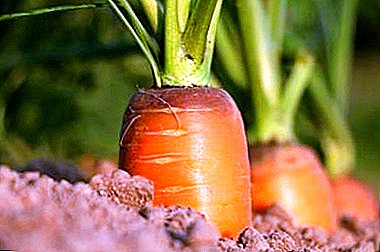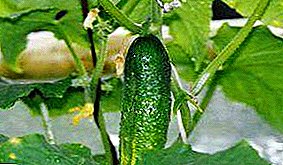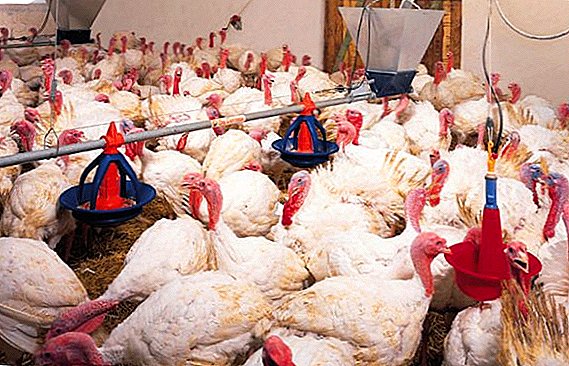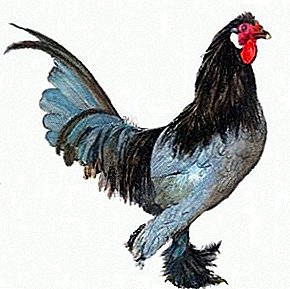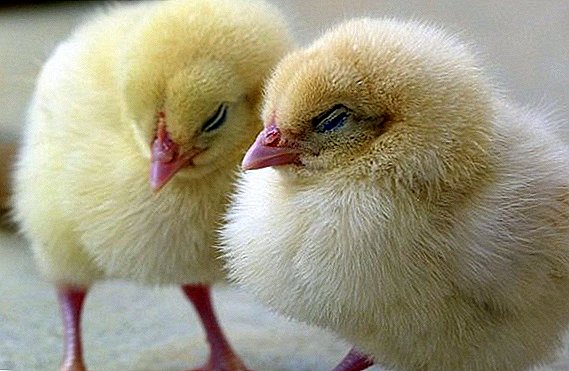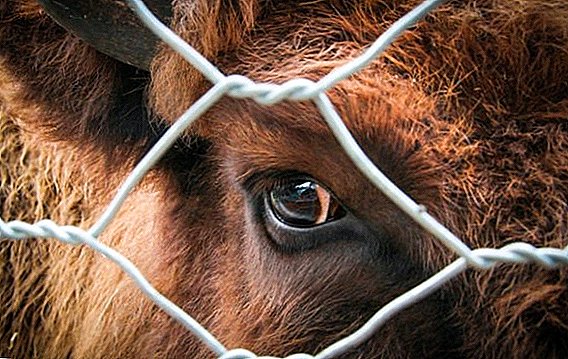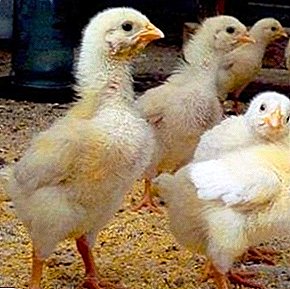
In the life of older chickens, proper feeding is one of the most important roles.
It is with its help that the growing organism of the chicken receives all the necessary vitamins and trace elements that contribute to proper growth and development.
If the growing chick does not receive a sufficient amount of feed, this will necessarily affect his health in the future.
Feeders for chickens of 6-8 weeks of age should be positioned so that all the livestock can freely approach them.
If some chickens do not have time to go to the feed, then you should place a larger number of feeders. In no case should not allow some young chickens to become weaker than the rest of the population.
In the future, this may lead to such unpleasant consequences as cannibalism or peck.
Regarding the location of the drinkers, for chickens of 6-8 weeks of age, open or flowing drinkers are used. The latter should have a small fence so that the young could not fall there.
Also, this preventive measure will protect clean water from dirt and droppings from the feet of a bird.
Features of feeding young chickens
 Immediately I must say that 6-8 weeks old chickens do not require such intensive care as daily allowances.
Immediately I must say that 6-8 weeks old chickens do not require such intensive care as daily allowances.
In addition, they do not need to carefully select the feed, because such birds are already easily fed with feed for adult chickens.
Any kitchen waste is good for feeding older chicks., but in no case should they be toxic to birds. Otherwise, the weak body of the chicken will not be able to cope with so many harmful substances.
If the young chickens are grown in a grassy compound, 2/3 of their feed should be concentrated feed, and food waste - in general 1/3.
How to determine the effectiveness?
 To determine how efficiently chickens feed, you need to constantly monitor body weight.
To determine how efficiently chickens feed, you need to constantly monitor body weight.
For each breed of chickens there is its own table of weight gain, which indicates how much the chicken should weigh at a particular stage of development.
In any case, young hens should not be too thin and passive. Usually this is how sick or weakened chickens behave.
First of all, you should pay attention to arrangement and correct development of fingers, tsovka and beak. If these parts of the body of young animals are very soft or have an uneven shape, then you need to look for the root cause of the problem of improper feeding.
Also, the effectiveness of feeding is verified by careful examination of the keel with your fingers. It must be firm and straight. At the same time, the posture of a young chicken remains perfectly even.
Depleted chickens have problems with holding their heads, and the keel softens. As a rule, such young animals are already difficult to save, so in most cases they are sent for slaughter.
What to feed the growing chickens?
 Chicks 6-8 weeks of age are fed in almost the same way as adult chickens.
Chicks 6-8 weeks of age are fed in almost the same way as adult chickens.
There are two possible types of feeding: dry and wet. During the dry type of feeding, the youngsters receive exclusively combined feed.
However, young birds need to be fed in this way from 3 to 4 times a day, so that they quickly gain weight. For these purposes, perfect feed with a high protein content.
In the body of the bird, it plays the role of one of the most important "building materials", therefore at the stage of maturation, protein is very important. As a rule, such feeds have a high energy value, so the young growth is growing rapidly.
The composition of feed produced by one of the plants may include both animal and herbal supplements. However, this is clearly not enough for the normal growth and development of the growing chick.
Mineral elements such as chalk and sand must be added to each portion of dry food. Sand will help a growing chicken body digest food faster, and chalk will be a good source of calcium.
Sometimes premixes are added to the factory feed for chickens. They significantly increase the digestibility of nutrients from the feed, so the young grows much faster than on feed without additives.
Premixes also help chicks cope with any toxic substances that enter their bodies. Moreover, they strengthen the immunity of the young, making it more resistant to various dangerous diseases.
 In order to get more productive chickens, the man stopped being content with nature and began breeding himself. The result of such work were the chickens Hisex and Landrace and others. About the latter you can read here: //selo.guru/ptitsa/kury/porody/yaichnie/landras.html.
In order to get more productive chickens, the man stopped being content with nature and began breeding himself. The result of such work were the chickens Hisex and Landrace and others. About the latter you can read here: //selo.guru/ptitsa/kury/porody/yaichnie/landras.html.Unfortunately, many novice breeders, after reading information about premixes, begin to feed the chickens exclusively with these additives. Few people know that young animals can become seriously ill or die from an overdose of such feed, therefore they are used only as an additive to factory feed.
 It should be understood that crushed fodder is much better absorbed in young chicken than wholegrain.
It should be understood that crushed fodder is much better absorbed in young chicken than wholegrain.
Sometimes the young are difficult to swallow large grains, so they remain hungry. To avoid this, feed must be carefully crushed. However, this is done not so much to simplify the feeding of the young, but to improve all the digestive processes in their bodies.
In the case of a wet type of feeding, grain masks are always used. Adult chickens are fed 3 to 4 times a day., and the volume of the portion is calculated so that the bird is able to completely eat all the food from the feeder for half an hour.
If there is a messy feed in the feeder, then it must be cleaned up, since pathogens are often found in it. Next time, less feed is added to the feeder for the older chickens.
Mixes for young birds are always moistened with fish or meat broth. This ingredient also contains a fairly large amount of protein, which accelerates the growth of grown chickens. Sometimes water or back may be used instead of broth, but vitamins should be added to these liquids to make the mixture more useful.
The chaff used for feeding chickens should always be crumbly, as more sticky feed can cause clogging and inflammation of the goiter. In addition, they stick to the legs and plumage of the bird, making them more dirty.
Conclusion
Feeding chicks of 6-8 weeks of age is very similar to feeding adult birds. However, young animals of this age are fed more intensively with the use of proteinized feed. Additionally, they are given premixes containing beneficial vitamins and trace elements that are actively involved in all growth processes.



